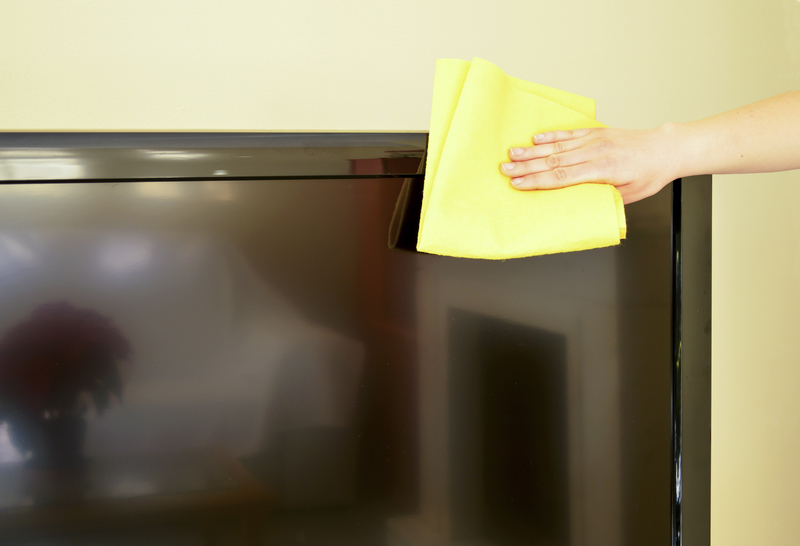Simple Steps to a Mould-Free Window Sill
Posted on 07/09/2025
Simple Steps to a Mould-Free Window Sill: Your Complete Guide
Mould growth on window sills is a common home problem that can affect your health and the beauty of your living spaces. Whether you're battling persistent black mould, or are worried about the first signs of unwanted fuzz, you're in the right place. Discover simple steps to keep your window sill mould-free, how to remove mould safely, and prevent it from returning. Our comprehensive guide provides practical tips, expert advice, and solutions to ensure cleaner, safer windows for you and your family.

Why is Mould on Window Sills a Problem?
Mould on your window sills isn't just an unsightly issue--it can be a health hazard too. Exposure to mould spores may cause allergic reactions, asthma attacks, or respiratory issues, especially in vulnerable people. It can also damage wooden surfaces, paint, and window frames, potentially leading to costly repairs.
- Health Concerns: Mould releases spores that can trigger allergies and respiratory conditions.
- Structural Damage: Ongoing moisture and mould can rot wood and deteriorate paint or sealant.
- Unpleasant Odours: Persistent mould growth often results in a musty, unpleasant smell.
What Causes Mould on Window Sills?
The primary culprit behind mould on windows is moisture. When it accumulates near or on window sills, it creates the perfect environment for mould spores to thrive. Common causes include:
- Poor ventilation: Limited air movement allows condensation to linger on windows and sills.
- High humidity: Kitchens, bathrooms, and even bedrooms can become humid during daily activities.
- Leaking windows: Faulty or damaged window seals may let rainwater or dew accumulate.
- Condensation: Temperature differences result in water collecting on cold window glass and frames.
How to Achieve a Mould-Free Window Sill: Step-by-Step Instructions
Removing and preventing mould on your window sills doesn't need to be stressful. Just follow these proven simple steps for a healthier, more attractive home.
Step 1: Gather Your Supplies
For safe and effective mould removal, you'll need the following items:
- Protective gloves
- Face mask (to avoid inhaling mould spores)
- Eye protection
- A soft brush or old toothbrush
- Microfiber cloths
- Bowl or spray bottle
- Mild detergent or vinegar
- Water
- Optional: Commercial mould remover (for stubborn cases)
Step 2: Protect Yourself & the Area
Safety first! Before tackling the mould, open windows for ventilation, and wear protective gear to avoid contact with spores. Lay old towels or sheets around the window sill to catch any drips or loosened mould particles. This makes cleanup easier and prevents further spread.
Step 3: Remove Surface Mould from Windowsills
Begin by gently brushing away any loose mould from the window sill using your soft brush or toothbrush. Do not scrape vigorously, as this can launch spores into the air. Wipe the area with a damp microfiber cloth to collect residual spores and debris.
Step 4: Clean the Window Sill Thoroughly
Now it's time for deep cleaning:
- Mix Your Solution: Combine a few drops of mild detergent in warm water, or use one part white vinegar with one part water. Pour into your bowl or spray bottle.
- Apply the Solution: Dampen a clean cloth in the mixture (or spray directly onto the window sill).
- Scrub Gently: Use the cloth or brush to clean all affected areas of the window sill and frame. Don't forget corners and crevices where mould can hide.
- Repeat as Needed: Rinse and reapply the cleaning solution to stubborn patches.
Tip: For bad infestations, a store-bought mould remover or diluted bleach (1 part bleach to 10 parts water) can be used, but always spot-test first and follow label instructions.
Step 5: Dry the Window Sill Completely
Mould thrives in damp environments. It's crucial to dry your window sill thoroughly after cleaning. Use a dry microfiber cloth to remove all moisture, and leave the window open for extra ventilation if weather permits.
Step 6: Prevent Future Mould on Window Sills
Once your window sill is spotless, take these preventative measures to maintain it mould-free:
- Improve ventilation: Open windows when weather allows, or use extractor fans especially in kitchens and bathrooms.
- Reduce humidity: Use a dehumidifier in rooms prone to moisture or condensation.
- Wipe down window sills regularly: Clean away condensation and dust weekly with a dry cloth.
- Fix leaks fast: Repair damaged window seals, cracks, or gaps to prevent water ingress.
- Consider window treatments: Blinds or curtains that trap moisture may facilitate mould growth--choose easy-to-clean options.
- Relocate plants: Potted plants on sills can contribute to excess moisture--move them or ensure good drainage.
The Best Cleaning Solutions for a Mould-Free Window Sill
While commercial cleaners can be effective, household products are often all you need. Here's a comparison of the best solutions for eliminating window sill mould:
- White Vinegar: Naturally acidic, vinegar kills most mould species. Apply directly and leave for one hour before wiping clean.
- Baking Soda: Mix 1 tablespoon baking soda in 500ml of water for an inexpensive and gentle cleaner that deodorizes as well as disinfects.
- Hydrogen Peroxide: A 3% hydrogen peroxide solution can eliminate mould without releasing harsh fumes--spray on, rest for 10 minutes, then wipe clean.
- Bleach: Highly effective against mould, but should only be used in well-ventilated areas, and not mixed with other cleaners, especially ammonia.
Always test a small, inconspicuous corner first to ensure your chosen solution won't damage your window frame or paintwork.
Natural vs. Chemical Cleaners for Mouldy Window Sills
Natural options like vinegar or baking soda are often enough for light mould and safe for regular use. Chemical cleaners such as bleach work quickly on deeply stained or stubborn mould but should be used sparingly due to their harshness.
For persistent, deep-set mould or if you notice rot, consult a professional to assess if the window frame or sill needs repair or replacement.
Expert Advice: Long-Term Strategies for Mould Prevention on Window Sills
- Keep Air Circulating: Place a small fan in rooms where condensation is a problem.
- Monitor Humidity: Maintain indoor humidity below 60%. Portable hygrometers are affordable and allow you to check levels quickly.
- Insulate Your Windows: Double glazing and window insulation film can reduce cold spots that cause condensation.
- Trim Outdoor Plants: Ensure shrubs or trees don't block air flow to windows, as shading can increase dampness.
- Paint with Anti-Mould Paint: After cleaning, repaint your sills with mould-repellent paints for extra defence.
Frequently Asked Questions About Mould-Free Window Sills
-
Is black mould on my window sill dangerous?
Prolonged exposure to black mould may aggravate health conditions. Remove it promptly following the steps above, and reach out to professionals for extensive infestations. -
How often should I clean my window sills?
Aim for a quick wipe-down weekly, and deep clean monthly or whenever you spot signs of mould. -
Can mould come back after cleaning a window sill?
Yes, if underlying moisture or ventilation issues remain unaddressed. Always combine cleaning with preventative strategies for the best results. -
What's the best way to stop condensation?
Increase ventilation, use extractor fans, and maintain balanced indoor temperatures to reduce condensation on windows and sills.

Quick Checklist: Mould-Free Window Sill Maintenance
- Daily: Open windows when possible for fresh air.
- Weekly: Wipe down sills with a dry or slightly damp cloth.
- Monthly: Inspect for signs of leaks, mould, or condensation.
- Seasonally: Reseal windows and inspect caulking as needed.
Conclusion: Enjoy Brighter, Healthier Windows with Simple Steps
A mould-free window sill not only looks better but supports a healthier indoor environment for your family. By adopting these simple steps, you can remove, clean, and prevent mould on window sills effectively. Remember, the key to preventing mould lies in regular maintenance, proper cleaning routines, and controlling indoor humidity.
Take action today: Check your window sills, try the cleaning tips above, and safeguard your family's comfort and well-being. For persistent or recurring mould issues, consider seeking professional advice to address possible structural problems.
With the right habits and simple maintenance, you'll enjoy clean, fresh, and mould-free window sills all year round!




